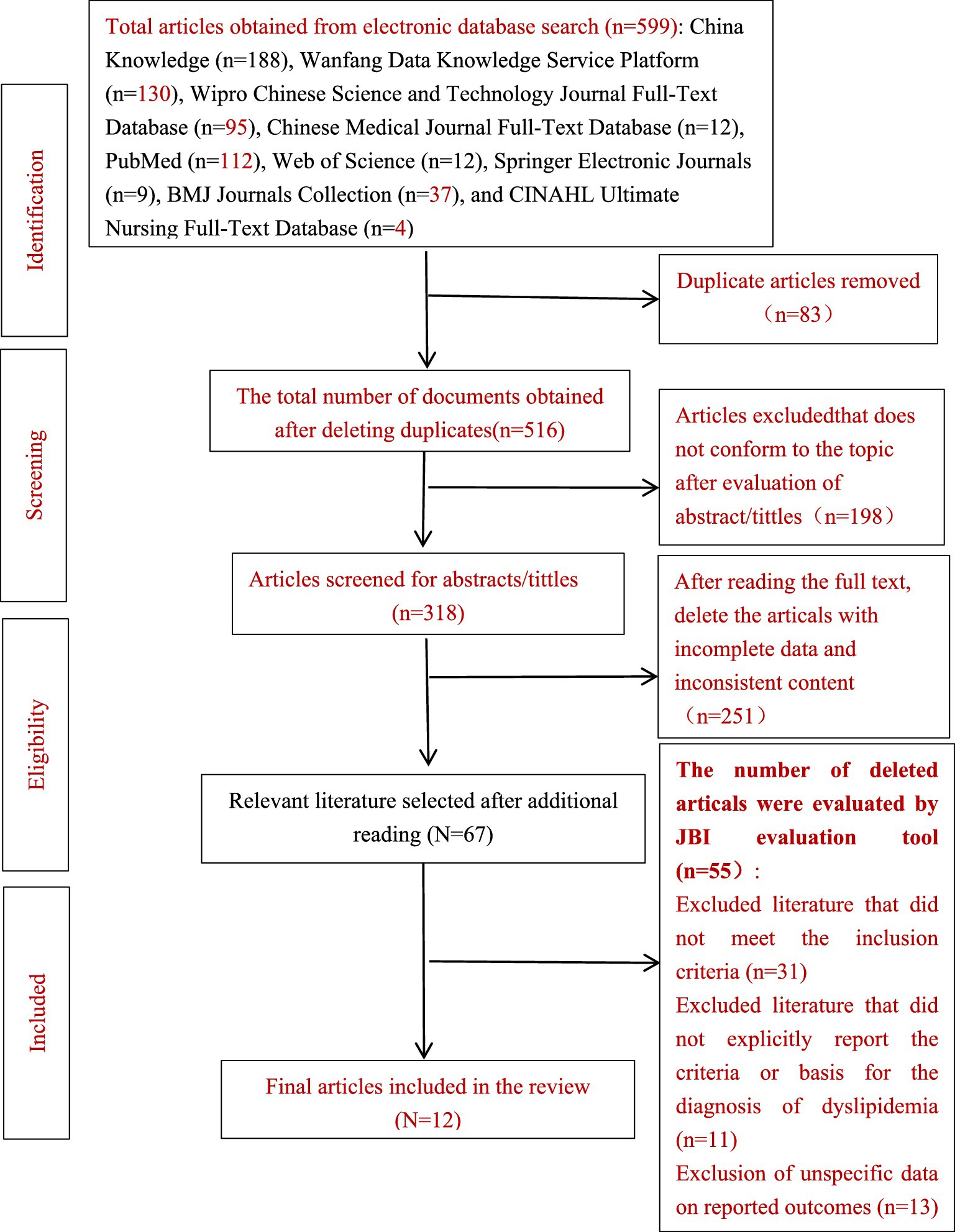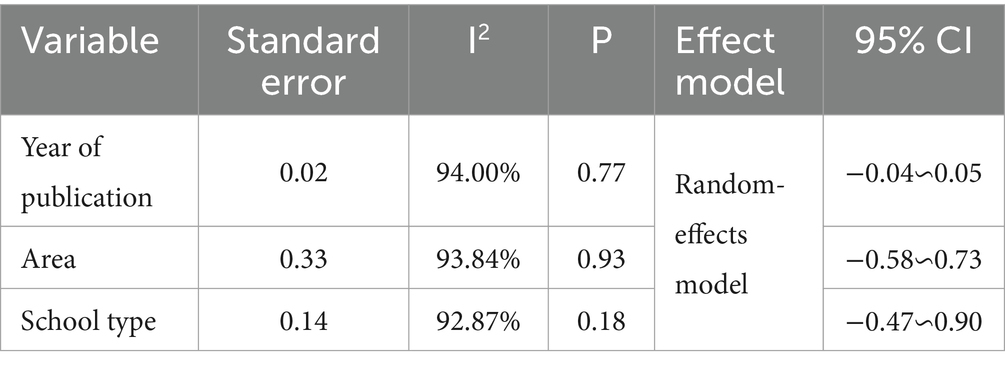- 1Faculty of Medicine, Macau University of Science and Technology, Macau, China
- 2The Seventh Affiliated Hospital of Southern Medical University, Foshan, China
- 3School of Traditional Chinese Medicine, Southern Medical University, Guangzhou, China
Objective: To systematically analyze the current situation with dyslipidemia among teachers in China, to provide guidance for lipid management and prevention of ASCVD.
Design: A systematic review and meta-analysis of the prevalence of dyslipidemia among teachers in China.
Methods: We searched via 9 databases for studies published between June 1, 1996, and July, 25, 2024. The article were evaluated by the Joanna Briggs Institute (JBI) Article Quality Assessment Tool (2016) in Australia. RevMan5.0 and R4.3.1 software were used for statistical analysis to calculate the OR and RR values and the 95% confidence intervals. This systematic review and meta-analysis were reported in line with the PRISMA guidelines.
Results: A total of 12 cross-sectional studies from 10 provinces (regions) were included, with the sample of 24,851, including 12,626 males and 12,198 females, the average age of about 40 (1,036 were aged ≤30, 5,872 were aged 30–40, 3,854 were aged 40–50, 4,607 were aged 50–60, and 3,425 were aged ≥60), including 9,114 people with dyslipidemia. The overall prevalence of dyslipidemia among teachers in China was 38% (p < 0.01, 95% CI (1.27–1.95)). The prevalence of hypertriglyceridemia was 21.6% (p < 0.01, 95% CI (1.05–1.50)), that of hypercholesterolemia was 13.3% (p < 0.05, 95% CI (0.98–1.34)), that of hyper-LDL-Cemia was 9.4% (p < 0.01, 95% CI (1.04–1.59)), and that of hypo-HDL-Cemia was 4.3% (p = 0.25, 95% CI (0.61–6.52)). The heterogeneity of dyslipidemia among teachers of the different sexes was I2 = 92% (p < 0.01). The overall prevalence of dyslipidemia, as well as that of high TC, high TG, and high LDL-C levels, was greater in female teachers than in male teachers (df = 10, 95% CI:1.35–1.52, p < 0.01). The heterogeneity of dyslipidemia among teachers of different ages was I2 = 74% (p < 0.01), and the risk was lower for aged <50 years than those aged ≥50 years (df = 7, 95% CI: 0.38–0.44, p = 0.04). The year, region, school type, and these factors showed no effect on the prevalence of dyslipidemia (p = 0.7353).
Conclusion: The prevalence of dyslipidemia in the teacher population in China is high and tends to increase with age. We should pay attention to the health management of the teachers, which can be done by appropriately adjusting the educational model settings, increasing the programs on physical activities, promoting the improvement of healthy lifestyles.
Systematic review registration: https://www.crd.york.ac.uk/prospero/, identifier [CRD42024567785].
1 Introduction
Cardiovascular disease (CVD) is one of the most important chronic noncommunicable disease (NCD) that seriously threatens human life and health globally and has become a major global public health problem (1, 2). CVD-related deaths account for 43.7% of total deaths worldwide every year. In 2022, the number of deaths caused by CVD in China reached 53%. CVDs account for 43.7% of all deaths globally every year (2). The number of deaths caused by CVDs in China reached 53.2% in 2022 (2). Dyslipidemia is closely related to atherosclerotic cardiovascular disease (ASCVD), being an initiating factor of ASCVD, and can increase the risk of morbidity and mortality of coronary heart disease and stroke by 3–5 times. However, China’s society as a whole still pays little attention to the prevention and control of lipid-associated diseases, and the prevalence of dyslipidemia continues to increase (3). In 2012, the total cholesterol, LDL cholesterol and triglyceride levels in China’s population (n = 60,0000) significantly increased compared with those in 2002, and the HDL cholesterol level significantly decreased (2). In recent years, the incidence of hyperlipidemia has risen significantly in all age groups (4, 5), and dyslipidemia has become an important public health problem in China (6). The State attaches importance to the treatment and management of hyperlipidemia, stressing that hyperlipidemia should be actively prevented and treated as an independent risk factor for cardiovascular and cerebrovascular diseases and incorporating the prevention and control of hyperlipidemia into the National Basic Public Health Program (7–10).
Dyslipidemia is a metabolism-related disease, the occurrence of which is strongly correlated with a poor lifestyle. High intake of sugar, fat, and a high-energy diet, drinking, obesity, staying up late, being sedentary, etc., are all risk factors. Teachers, as representatives of a large group of highly educated people in modern times, have a work nature that emphasizes brain power over physical strength, with greater mental stress and less physical activity, which lays hidden dangers to their health. Some studies have reported that teachers have a high incidence of dyslipidemic diseases (11, 12), domestic scholars have conducted research at different levels on the health of teachers in different regions of the country. The results show that metabolic-related diseases are the most important diseases affecting the health status of the teacher group and that diseases such as overweight, obesity, hyperlipidemia, fatty liver, hypertension, and hyperglycemia are highly prevalent in the teacher group; in particular, the detection rate of dyslipidemia is high. These chronic diseases are also high-risk factors for the development of cardiovascular and cerebrovascular diseases. Therefore, understanding the prevalence of dyslipidemia among brain workers, as the main group of dyslipidemia, and teachers, as the typical representatives of this group, is conducive to promoting the regular study of dyslipidemia among people, and taking effective management measures to control the level of blood lipids, which is of great significance for reducing the incidence of cardiovascular and cerebrovascular events and promoting the management of chronic diseases.
2 Materials and methods
2.1 Protocol and registration
We prospectively registered the protocol in the PROSPERO.
Database, and is awaiting approval. This systematic review and meta-analysis were reported in line with the Preferred Reporting Items for Systematic reviews and Meta-Analyses (PRISMA) statement guidelines (13) and are shown in Supplementary material 1.
2.2 Study design
PICO method was adopted to define our study question: P (Participants): Chinese teachers; I (Intervention): None; C (Comparisons): Non-teacher population; O (Outcomes): Blood lipid.
2.3 Inclusion and exclusion criteria
The inclusion criteria were as follows: (1) cross-sectional study; (2) the participants of the study were in-service teachers from different types of institutions; and (3) the main outcome indicators were the prevalence of dyslipidemia, including the overall prevalence and prevalence of different types of dyslipidemia. The exclusion criteria were as follows: (1) article with non-Chinese in-service teachers as subjects; (2) article without clear diagnostic criteria or a basis for dyslipidemia; (3) article with incorrect or incomplete data; (4) repeatedly published or updated article; (5) reviews or conference proceedings; and (6) article not in Chinese or English.
2.4 Search strategy
We searched the China Knowledge Network Infrastructure (CNKI), Wipro China Science and Technology Journal Database, Wanfang Full-text Database, China Medical Journal Full-text Database, Web of Science, PubMed, Springer Electronic Journals, BMJ Journals Collection, and CINAHL Ultimate Nursing full-text database for studies published between June 1, 1996, and July,25,2024 to define eligible studies. The search strategy uses topics words combine with free words. The following key words are searched: “hyperlipidemia, dyslipidemia, dyslipoproteinemia, blood lipids, blood fat, serum lipids, epidemiology, prevalence, incidence, detection rate, China, Chinese, teachers, teach staff.” Complete search strategies are shown in Supplementary material 2.
2.5 Article screening and data extraction
Two authors (WXX and OYF) independently evaluated the quality of these articles. When the evaluation opinions were inconsistent, the 2 researchers discussed their opinions based on the inclusion and exclusion until they reached unanimity; if they were unable to unify their opinions, they discussed and analyzed the article with the 3rd researcher and then selected it. When screening the articles, the first choice was to eliminate duplicates, then read the title and abstract, eliminate irrelevant articles, read the full text and then screen according to the criteria of screening. The extracted articles mainly included authors, year of article publication, sample size, sampling method, different types of schools, sex distribution, age distribution, regional distribution, diagnostic criteria for dyslipidemia, and major health outcome indicators.
2.6 Article quality assessment
The JBI Article Quality Assessment Tool (LQAT, 2016) was used to assess the initial inclusion of studies. The JBI LQAT for prevalence studies consists of nine entries (14) that assess the overall quality of prevalence studies in terms of the sampling method, the participants, data collection, analysis methods, etc., and each entry was graded as “yes,” “no,” “unclear,” or “not applicable.” Each entry was scored as “yes” (1 point), “no,” “unclear” or “not applicable” (0 points), and each entry was added to the total score (0 points). The scores were added together to obtain a total score (0–9). A score of 0–5 was considered low quality, 6–7 was considered medium quality, 8–9 was considered high quality, and finally, medium- to high-quality article was included.
2.7 Data synthesis and analysis
Data analyses used the meta package of R, version 4.3.1 and the meta package of. vRevMan5.0 to calculate the prevalence of dyslipidemia and its 95% CI. The heterogeneity among the included studies was analyzed by χ2 test (α = 0.100), and the heterogeneity was determined by I2. We used p-value and I2 to evaluate the heterogeneity. If p ≥ 0.100 and I2 ≤ 50%, the heterogeneity among studies was small, and the fixed effect model was adopted. If p < 0.100 and I2 > 50%, it shows that there is heterogeneity among studies, and the random effect model is adopted. Four subgroup analyses were conducted to explore factors impacting the result of the prevalence of dyslipidemia: sex, age, region (according to the commonly used regional geographical divisions in China), and school tier. Funnel plot and Egger’s test were used to evaluate publication bias. Sensitivity analysis was used to evaluate the stability and reliability of the analyses.
3 Results
3.1 Article screening results
A total of 425 Chinese and 174 English articles were found, and 12 (15–26) cross-sectional studies on the prevalence of dyslipidemia among teachers were ultimately included and excluding conference papers and dissertations, as well as low-quality article (JBI article evaluation score of 5 or less). The 12 cross-sectional studies from 10 provinces (regions), with a total sample size of 24,851, including 12,626 males and 12,198 females, with an average age of about 40 (1,036 were aged ≤30, 5,872 were aged 30–40, 3,854 were aged 40–50, 4,607 were aged 50–60, and 3,425 were aged ≥60), including 9,114 people with dyslipidemia. The prevalence of dyslipidemia ranged from 18.73 to 60.3%. The flowchart of the article screening process is detailed in Figure 1.
3.2 Article quality evaluation
The JBI Article Quality Evaluation Tool was used to evaluate the quality of the initially included studies. There are 9 items in the evaluation index, with 1 point for each item and 9 points total. A score of 0–5 indicated low quality, 6–7 indicated medium quality, and 8–9 indicated high quality; 12 medium- and high-quality articles were ultimately included, as shown in Tables 1, 2.
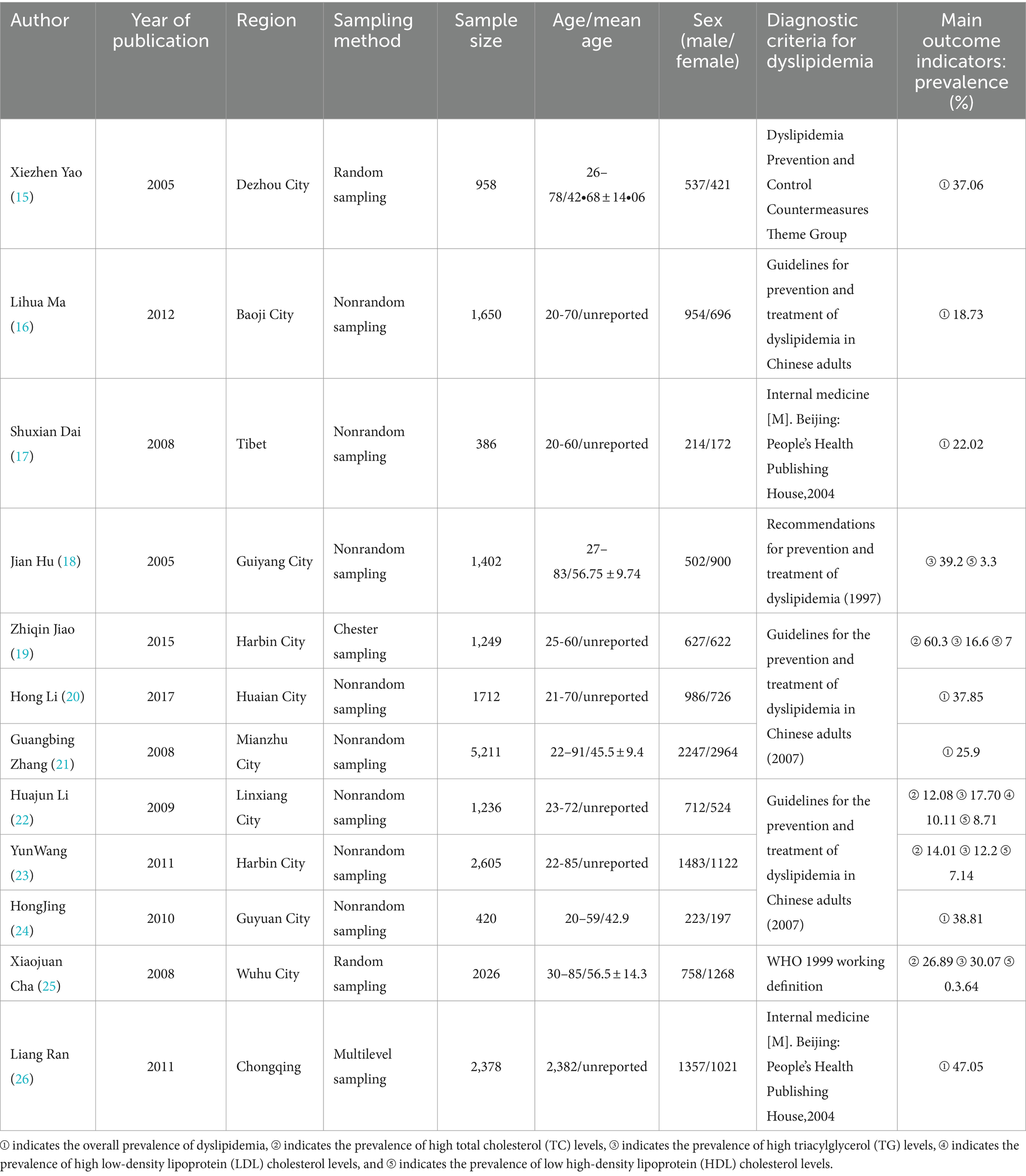
Table 1. Basic characteristics of the Chinese teachers included in the analysis of the prevalence of dyslipidemia in China.
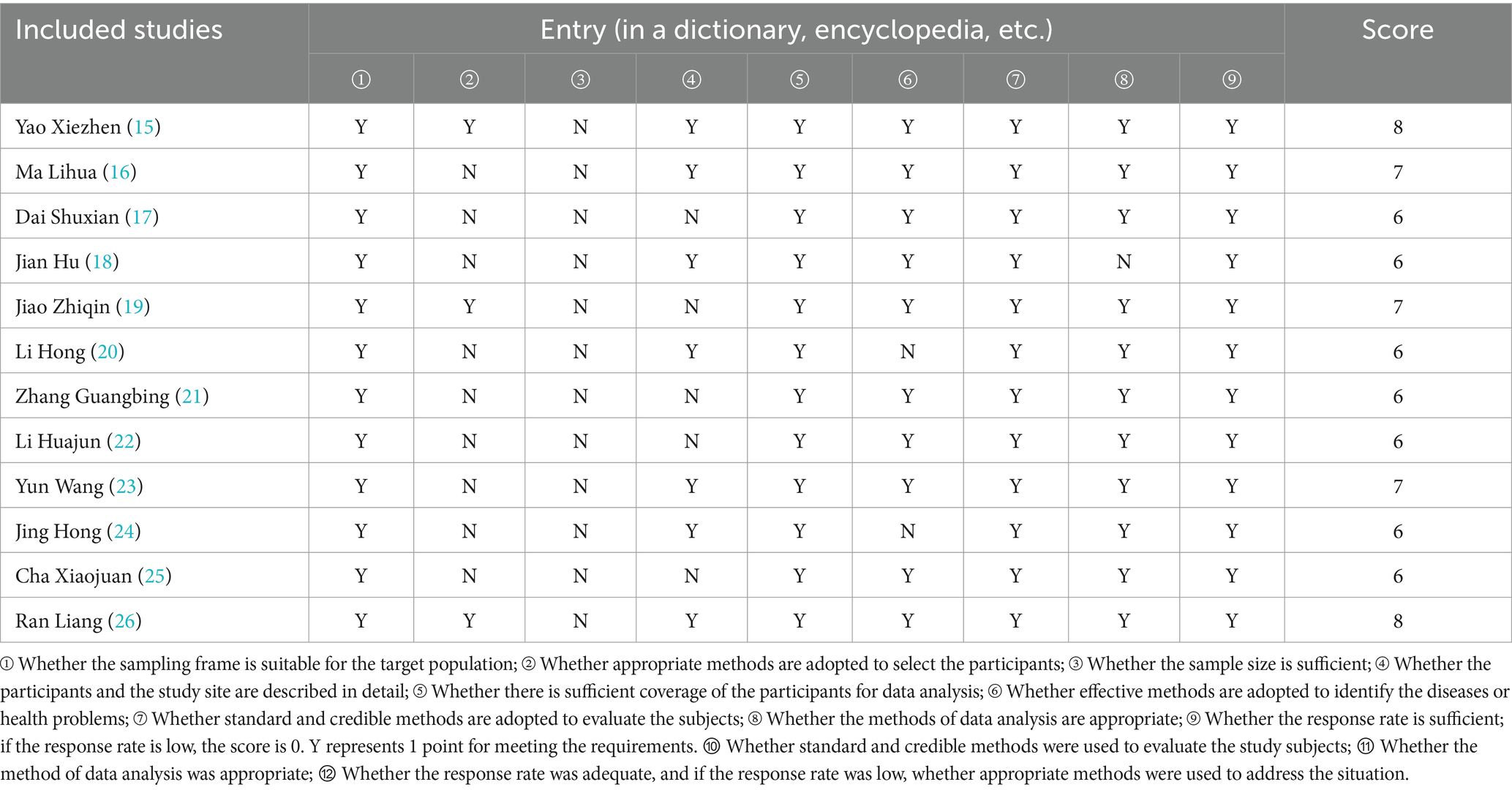
Table 2. Quality assessment results of the included cross-sectional studies on the prevalence of dyslipidemia among Chinese teachers.
3.3 Meta-analysis results
3.3.1 Analysis of the prevalence of dyslipidemia
7 studies reported the prevalence of dyslipidemia, 5 studies reported the prevalence of hyperTG-emia, 3studies reported the prevalence of hyperTC-emia, 3 studies reported the prevalence of high LDL-C, and 4 studies reported the prevalence of low HDL-C. A meta-analysis using the random-effects model showed that the prevalence of dyslipidemia among teachers in China was 38% (p < 0.01) (Figure 2). In terms of the prevalence of different types of dyslipidemia, the prevalence of hyper-TGemia was 21.6% (p < 0.01), that of hyper-TCemia was 13.3% (p < 0.05), that of hyper-LDL-Cemia was 9.4% (p < 0.01), and that of hypo-HDL-Cemia was 4.3% (p = 0.25). There were differences in the prevalence of high TG, high TC and hyper-LDL-Cemia levels in terms of the prevalence of different types of dyslipidemia (p < 0.05) (Table 3).
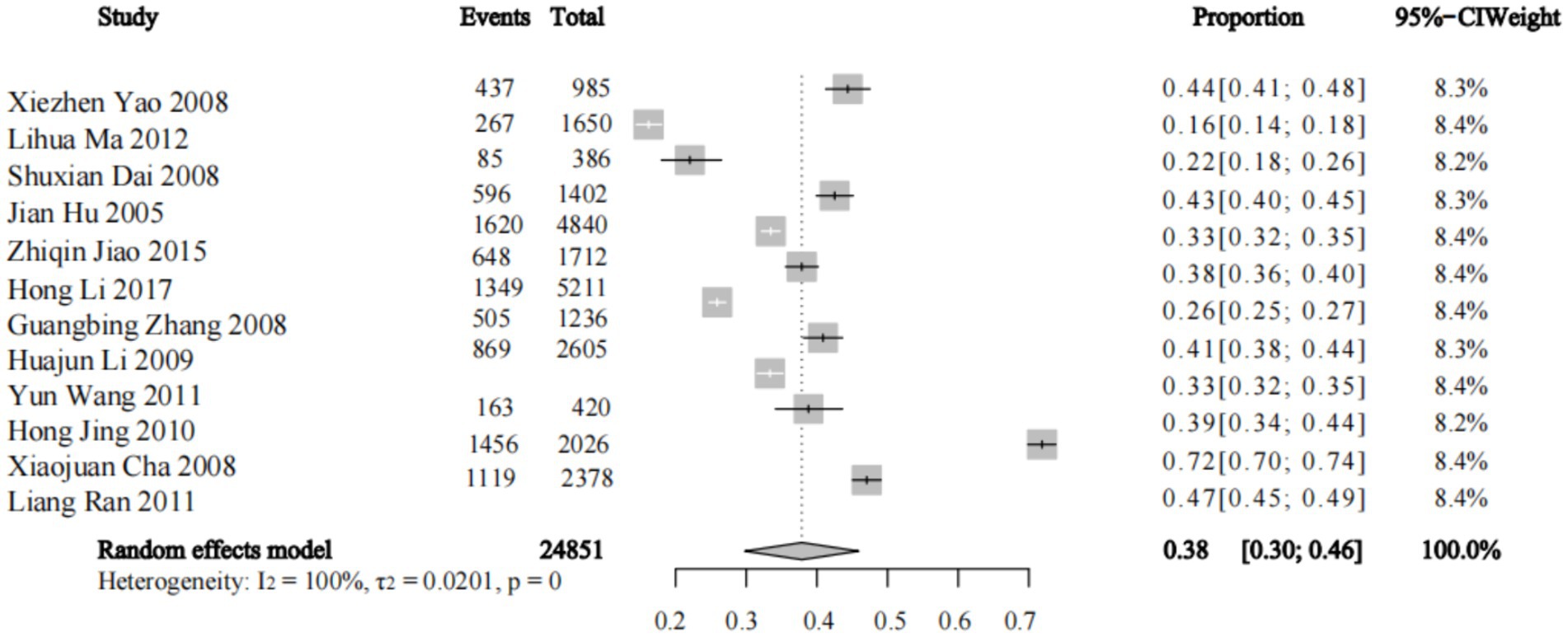
Figure 2. Forest plot of the meta-analysis data on the prevalence of dyslipidemia among teachers in China.

Table 3. Meta-analysis results of the prevalence of different types of dyslipidemia among teachers in China.
3.3.2 Subgroup analysis of the prevalence of dyslipidemia
Subgroup analysis was carried out using sex and age as subgrouping factors and a random-effects model. The results of the subgroup analysis were as follows. (1) In terms of sex, the heterogeneity of dyslipidemia among teachers of the different sexes was I2 = 92% (p < 0.01); female teachers differed from male teachers in terms of the overall prevalence of dyslipidemia and the prevalence of high TG and low H-LDC levels, with higher prevalence rates than those in male teachers, and there was no statistically significant difference in terms of the prevalence of high TC or high LDL-C levels (Figures 3, 4). (2) In terms of age, the heterogeneity of dyslipidemia among teachers of different ages was I2 = 74% (p < 0.01), and the risk of dyslipidemia was lower in teachers aged <50 years than in those aged ≥50 years (p = 0.004) (Figure 5).
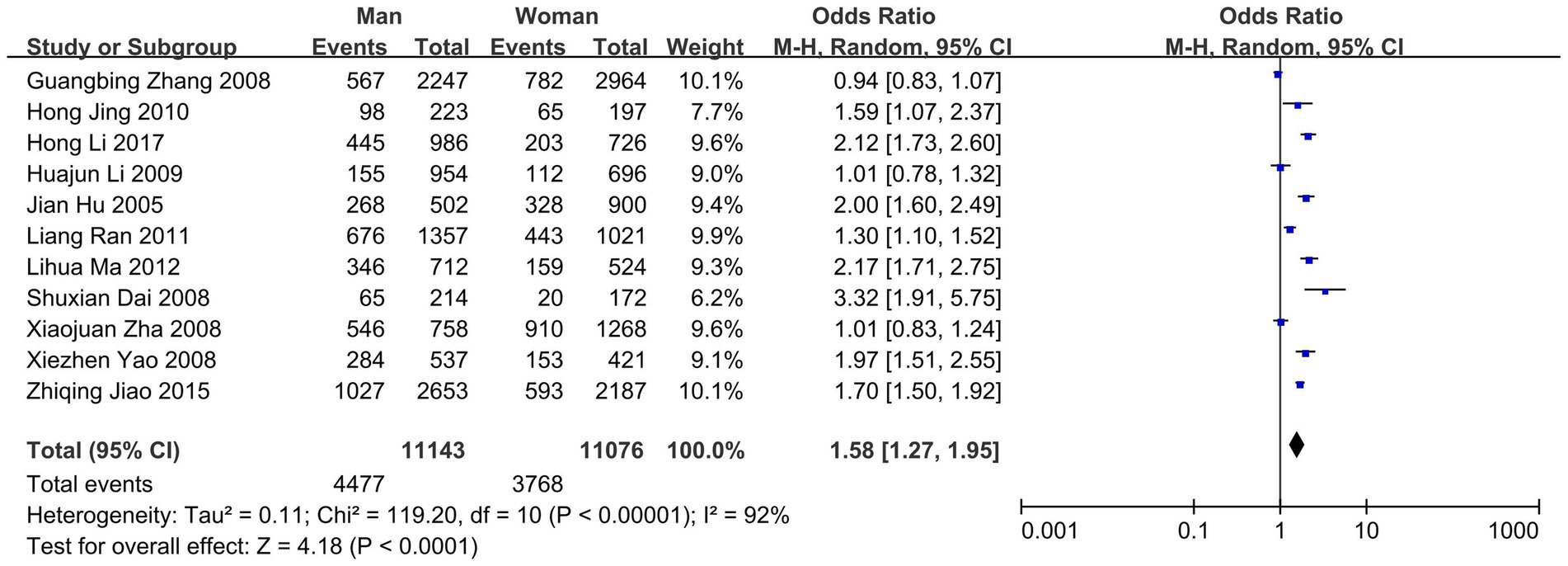
Figure 3. Meta-analysis results of the prevalence of dyslipidemia among teachers of the different sexes in China.
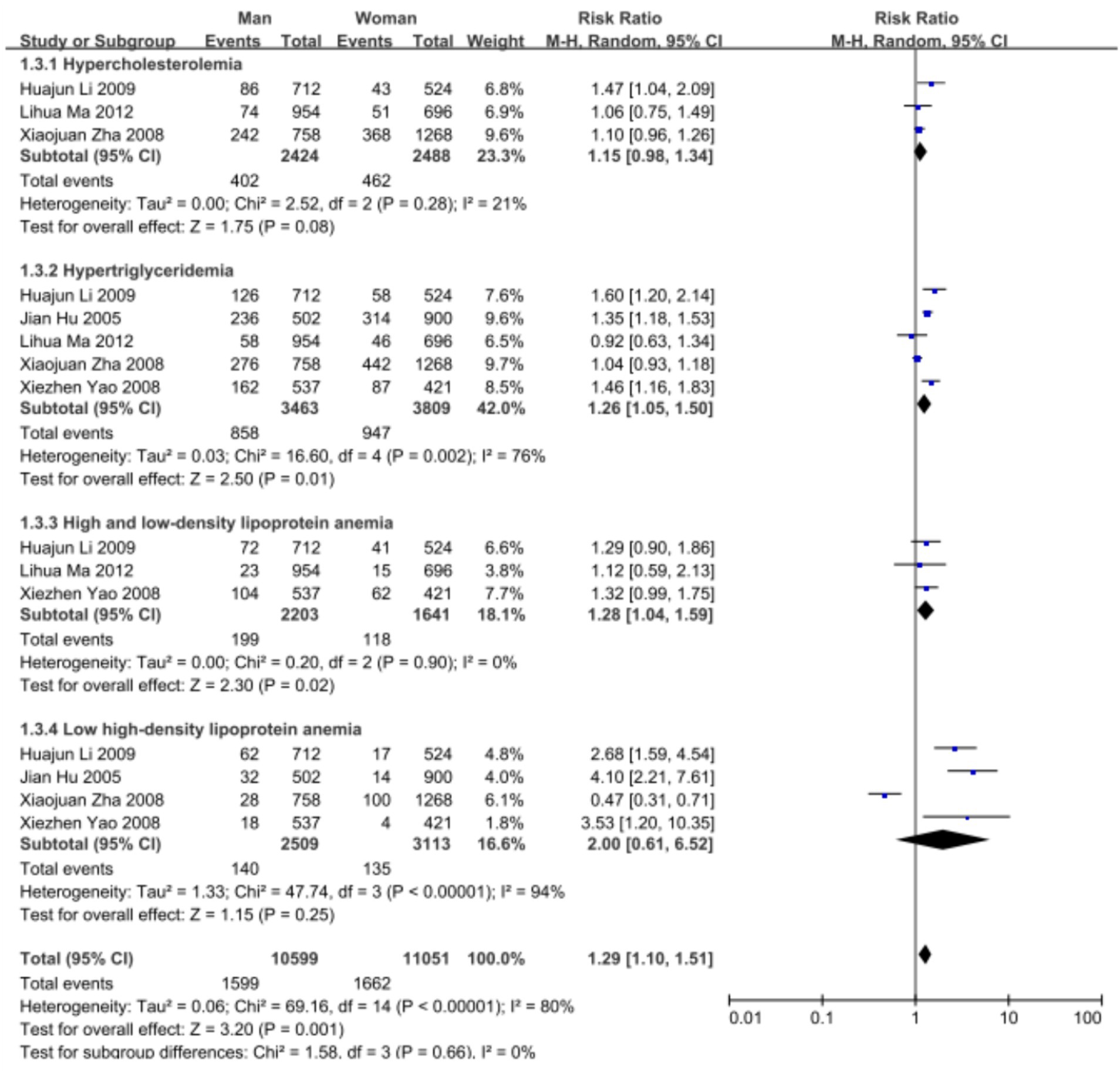
Figure 4. Meta-analysis results of the prevalence of different types of dyslipidemia among teachers in China.

Figure 5. Meta-analysis results of the prevalence of dyslipidemia among teachers of different age groups in China.
3.3.3 Influence factor regression analyses
To further search for sources of heterogeneity and to explore the factors influencing dyslipidemia, meta-regression analyses were performed for year of publication, region, and type of school. The results of the single influence factor analysis showed that different publication years (p = 0.77), different regions (p = 0.93), and different types of schools (p = 0.18) had no effects on the prevalence of dyslipidemia. Meta-regression analysis combining the above three factors showed consistent results with those of separate analyses, with no effect on the prevalence of dyslipidemia (I2 = 91.97%, p = 0.74), as shown in Table 4.
3.3.4 Publication bias
A funnel plot was used to analyze the publication bias for the included studies and showed that the study points were basically symmetrically distributed on both sides of the axis (see Figure 6), suggesting that the possibility of publication bias was small. Because one of the studies lacked data on dyslipidemia, only 11 articles are shown in the funnel plot for publication bias analysis. The Egger’s test results show (t = 1.37, p = 0.1702) that the possibility of publication bias is relatively small.
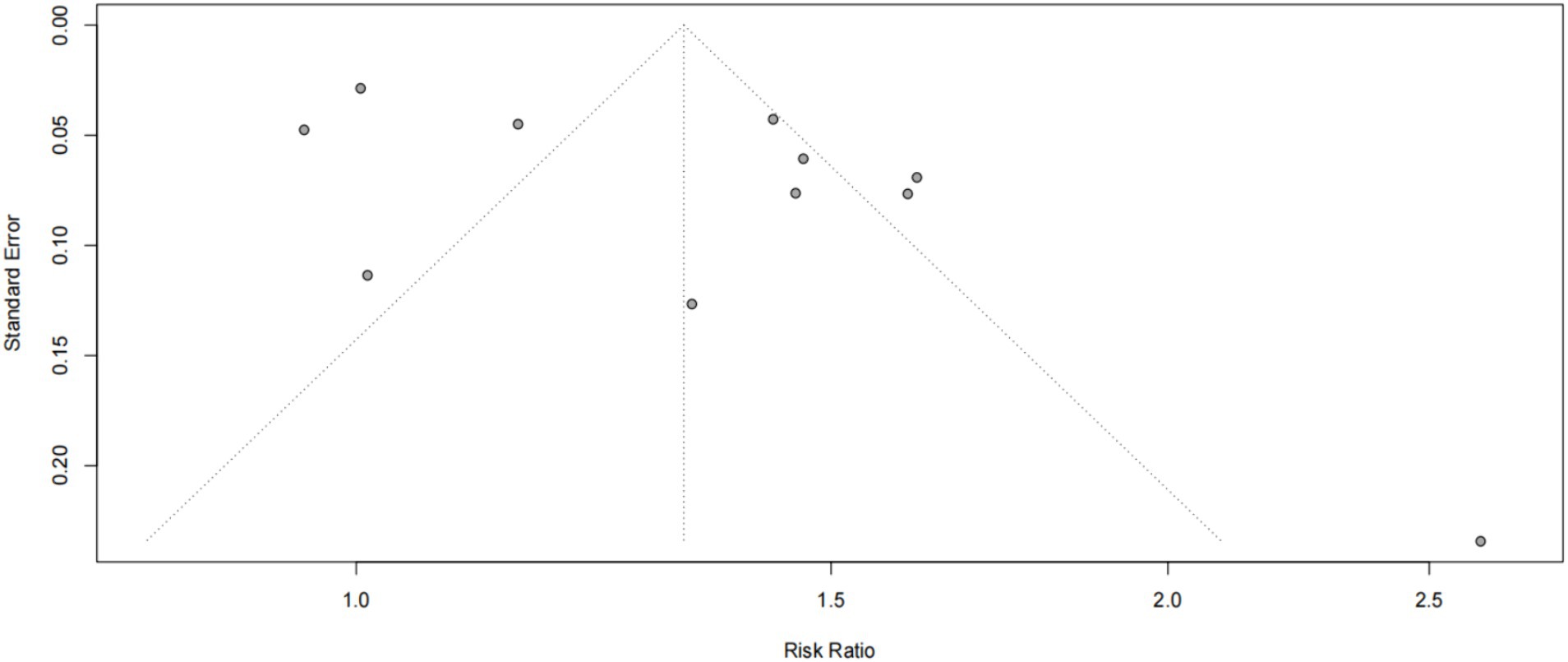
Figure 6. Publication bias plot for the included cross-sectional studies on the prevalence of dyslipidemia among teachers in China.
3.3.5 Sensitivity analysis
Sensitivity analyses were conducted by excluding individual studies one by one, and the results suggested that the stability of the results of the meta-analyses was good, as shown in Figure 7.
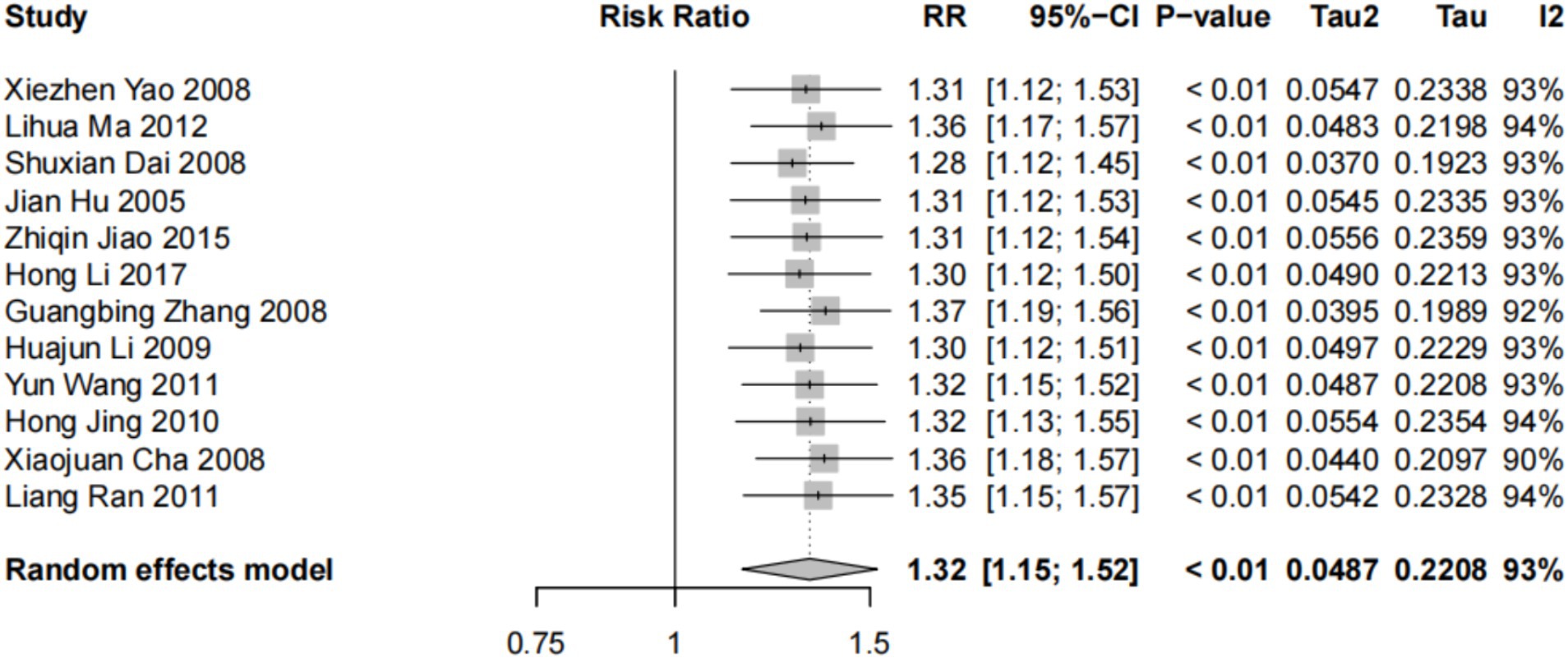
Figure 7. Sensitivity analysis of the included cross-sectional studies on the prevalence of dyslipidemia among teachers.
4 Discussion
4.1 The prevalence of dyslipidemia among teachers is greater than the national average
This study analyzed 12 cross-sectional studies from 11 provinces (municipalities directly under the central government) covering seven regions of China, namely, South China, East China, Central China, North China, Northeast China, Southwest China, and Northwest China, which included 24,851 teachers. The results of using the JBI article Evaluation Scale showed that the evaluation scores of the included studies were above 6 and that the quality of the article was of a medium-high grade. According to the results of the meta-analysis, the overall prevalence of dyslipidemia among teachers in China was 38%, which was higher than the national average of the prevalence of dyslipidemia among adults. Data from the 2018 national survey reported in the Report on Nutrition and Chronic Disease Situation of the Chinese Population (2020) (2) showed that the prevalence of dyslipidemia among adults aged 18 years or older was 35.6%. Dyslipidemia is a metabolism-related disease, the occurrence of which is strongly correlated with a poor lifestyle. High intake of sugar, fat and high-energy diets, alcohol consumption, obesity, staying up late and being sedentary are all risk factors. In the future, medical personnel should strengthen the health intervention and management of the teacher group, encourage them to actively participate in health testing and provide effective health education to improve their poor lifestyles. Educational management departments should pay attention to the health management and care of the teacher group, which can be done by appropriately adjusting the educational model settings, increasing the programs on physical activities for teachers, reducing the pressure of the profession and promoting the improvement of healthy lifestyles.
4.2 Prevalence of dyslipidemia among teachers in China and abroad
A study that evaluated the prevalence of metabolic syndrome among 1,165 Malaysian teachers revealed that overweight (obese) teachers accounted for 82.3% of the sample (27). A study of the health status of faculty members in some universities in the Arab world revealed a metabolic syndrome prevalence of more than 30% and a dyslipidemia and excess BMI prevalence with age (28). An assessment of changes in health risks among university staff undergoing long-term health interventions at Vanderbilt University in the United States revealed that the proportion of people with high cholesterol levels and high blood pressure had been on the rise since 2003 (29). A study by Sheffield Hallam University in the UK revealed no significant improvements in the BMI, systolic blood pressure, total cholesterol and HDL-C levels and body fat percentage over a five-year period in an overall analysis of five-year health data (30). It is clear that a range of metabolic disorders, such as dyslipidemia, blood pressure abnormalities and blood glucose abnormalities, are also prevalent in overseas teaching populations.
4.3 Sex subgroup analyses
To analyze the sources of heterogeneity in the prevalence of dyslipidemia among teachers, subgroup analyses and meta-regression analyses were performed for sex, age, region and school type. The overall prevalence of dyslipidemia and the prevalence of high TG and low HDL-C levels were greater in female teachers than in male teachers, and there were no statistically significant differences with regard to the prevalence of high TC and high LDL-C levels. The Report on Nutrition and Chronic Disease in China (2020) (2) shows that the overall prevalence of dyslipidemia in China is greater in men than in women and that the prevalence of dyslipidemia in men decreases with age, whereas in women, it increases with age. This may be related to the professional particularity of the teacher group, in which there is no difference in work content and work pressure between men and women; however, owing to the special characteristics of the female group, a decrease in estrogen levels after menopause can cause an increase in the activity of 3-hydroxy-3-methylglutaryl monoacyl-coenzyme a reductase (HMGR) in the liver, which in turn increases plasma cholesterol levels, thus triggering disorders of glucose and lipid metabolism in the organism (31). Therefore, our findings suggest that educational management organizations need to pay more attention to women’s physical and mental health in the workplace.
4.4 Age subgroup analysis
This study revealed that the prevalence of dyslipidemia among teachers aged <50 years was lower than that among teachers aged ≥50 years. Some studies in China have shown that a high detection rate of metabolism-related diseases is basically observed among teachers over 40 years old (32, 33), which is related to the physiological characteristics of the overall population as well as to the characteristics of the social class (34).
4.5 Meta-regression analyses for year, region, and school type
Analyses of the three dimensions, namely, the year of study publication, region, and school type stratum, revealed no significant differences in the prevalence of dyslipidemia. This may be related to factors such as the number of included studies and their design and the respondents and their access to information. For example, none of the studies reported whether there was a correlation between the level of education of teachers and the prevalence of dyslipidemia.
5 Conclusion
In conclusion, the prevalence of dyslipidemia in teachers in China is higher than the national average level, and there are differences in the prevalence of dyslipidemia in teachers of different genders and ages. Dyslipidemia is a metabolic related disease, and its occurrence has a great correlation with poor lifestyle, so it is necessary to strengthen the health management and intervention of teachers. Firstly, it is necessary to strengthen publicity and education, improve the health literacy of teachers, improve self-efficacy, and improve their health literacy and health compliance. Secondly, strengthen the construction of campus support system and improve the guarantee mechanism; Schools can be regarded as special functional communities to establish a group health management mechanism, improve the supervision and promotion role of partners through establishing partnerships, and effectively promote the change of health behaviors. Thirdly, improve the follow-up system, strengthen positive feedback, and strengthen positive behavior. Education management departments should attach importance to the health management of teachers. School can sign a contract with general practitioners, and closed-loop management of the group’s health schedule can be achieved through the establishment of follow-up and management of general practitioners.
6 Limitations
In conclusion, the prevalence of dyslipidemia among teachers is high in our country. There are differences in the prevalence of dyslipidemia among teachers from different sex and age groups. This study has certain limitations, as follows: (1) the included studies were cross-sectional studies, which are affected by the study design, sample selection, indicator measurement, and publication year, and publication bias is difficult to avoid; (2) some of the influencing factors, such as the age grading and education level, were not reported in the article included in the analysis, which may have had a certain impact on the results; and (3) the number of included studies was only 12, and the quality of some included studies was moderate. In the future, it is necessary to carry out a large-sample, multicenter epidemiological study to determine the prevalence of dyslipidemia in this group to validate the results of this study and, at the same time, provide a reference for good prevention and control of dyslipidemia-related chronic diseases.
Data availability statement
Data are available upon reasonable request to the corresponding author (ZHFmMTY4OUBzbXUuZWR1LmNu), with Research Ethics Board approval.
Author contributions
XW: Writing – review & editing, Writing – original draft, Visualization, Validation, Supervision, Software, Resources, Project administration, Methodology, Investigation, Funding acquisition, Formal analysis, Data curation, Conceptualization. FO: Writing – review & editing, Software, Resources, Formal analysis. YL: Writing – original draft, Data curation. QD: Project administration, Methodology, Writing – review & editing, Supervision.
Funding
The author(s) declare financial support was received for the research, authorship, and/or publication of this article. National Key R&D Program of China (2020YFC2006400).
Acknowledgments
We thank all authors for contributions to this article and we appreciate the reviewers’ valuable comments.
Conflict of interest
The authors declare that the research was conducted in the absence of any commercial or financial relationships that could be construed as a potential conflict of interest.
Correction note
A correction has been made to this article. Details can be found at: 10.3389/fpubh.2025.1666159.
Publisher’s note
All claims expressed in this article are solely those of the authors and do not necessarily represent those of their affiliated organizations, or those of the publisher, the editors and the reviewers. Any product that may be evaluated in this article, or claim that may be made by its manufacturer, is not guaranteed or endorsed by the publisher.
Supplementary material
The Supplementary material for this article can be found online at: https://www.frontiersin.org/articles/10.3389/fpubh.2024.1425387/full#supplementary-material
References
1. Yiran, W, and Qijin, W. Focuses and difficulties of chronic disease prevention and treatment: interpretation of China's medium-and long-term plan for the prevention and treatment of chronic diseases (2017-2025). J Second Milit Med Univ. (2017) 38:828–31. doi: 10.16781/j.0258-879x.2017.07.0828
2. National Health Commission. Report on nutrition and chronic disease status of Chinese residents (2020). J Nutr. (2020) 42:521.
3. China Cardiovascular Health and Disease Report Writing Group. Summary of the China cardiovascular health and disease report 2020. Chinese J Circul. (2021) 36:521–45. doi: 10.3969/j.issn.1000-3614.2021.06.001
4. Ying, G, Kefei, D, and Runlin, G. Strengthening lipid management in China is urgent. Chinese J Circul. (2022) 37:209–11. doi: 10.3969/j.issn.1000-3614.2022.03.001
5. Wen-Qing, D, Hong-Po, D, and Jie, M. Meta-analysis of the current status of dyslipidaemia prevalence in Chinese children and adolescents. Chinese J Epidemiol. (2015) 36:71–7. doi: 10.3760/cma.j.issn.0254-6450.2015.01.017
6. Junren, Z, Runlin, G, Shuiping, Z, Guoping, L, Dong, Z, Jianjun, L, et al. Guidelines for the prevention and treatment of dyslipidaemia in Chinese adults (2016 revised edition). Chinese J Circul. (2016) 31:937–53.
7. Wei, Y. (2014). Prevention and control of hyperlipidemia should be included in basic public health service projects [EB/OL]. (Accessed January 16, 2023). Available at: http://www.rmzxb.com.cn/c/2014-05-21/327845.shtml
8. Henan. (2020).Screening for dyslipidemia to be included in basic public health programmes [EB/OL]. (Accessed November 25, 2023). Available at: http://hn.zhonghongwang.com/show-129-22729-1.html
9. Special Focus-Beijing. (2016). Prevention and treatment of dyslipidaemia urgently needs to be included in the national basic public health service [EB/OL]. (Accessed November 25, 2023). Available at: http://news.cctv.com/2016/03/03/VIDEc08HCNlyC6j9C9tNY9IK160303.shtml
10. Central People's Government of the People's Republic of China. (2016).Outline of the "Healthy China 2030" Plan [EB/OL]. (Accessed November 25, 2023). Available at: http://www.gov.cn/zhengce/2016-10/25/content_5124174.htm.
11. Jianhua, G. Analysis of health examination results of some primary and secondary school teachers in a district of Beijing. China Pract Med. (2014) 9:271–2. doi: 10.14163/j.cnki.11-5547/r.2014.19.005
12. Fagbohun, TR. Systematic review on the psychometric, reliability and validity properties of translated neuropathic pain screening tools (dn4, lanss and pdq) 1 January 2005-19 July 2019. Int J Med Med Res. (2021) 7:51–67. doi: 10.11603/ijmmr.2413-6077.2021.1.12120
13. Page, MJ, McKenzie, JE, Bossuyt, PM, Boutron, I, Hoffmann, TC, Mulrow, CD, et al. The PRISMA 2020 statement: an updated guideline for reporting systematic reviews. J Clin Epidemiol. (2021) 134:178–89. doi: 10.1016/j.jclinepi.2021.03.001
14. Zhou, YF, Gu, Y, and Hu, Y. Xing WJ.JBI Centre for Evidence-Based Health Care's quality evaluation of a quality assessment tool for prevalence and analytic cross-sectional studies about different types of research. J Nurse Adv. (2018) 33:219–21. doi: 10.16821/j.cnki.hsjx.2018.03.007
15. Xiezhen, Y, Beishang, X, and Hao, YU. A survey of blood lipid and blood glucose levels among secondary school teachers in Dezhou City in 2005. Prev Med Forum. (2008) 14:223–5. doi: 10.3969/j.issn.1672-9153.2008.03.011
16. Lihua, M, and Xuexue, X. Analysis of lipid levels among primary and secondary school teachers in Jintai District, Baoji City. Clin Med Pract. (2012) 21:697–9. doi: 10.3969/j.issn.1671-8631.2012.09.025
17. Shuxian, D. Analysis of dyslipidaemia and prevention strategies among teachers in Tibetan universities. Health Career Educ. (2008) 21:120–1. doi: 10.3969/j.issn.1671-1246.2008.21.080
18. Jian, H, Jun, Y, Yinghong, J, Ping, L, and Zhe, L. Epidemiological survey of hypertension and related diseases among 1,402 secondary school teachers in Guiyang City, Guizhou Province. Journal of practical. Clin Med. (2005) 9:73–5. doi: 10.3969/j.issn.1672-2353.2005.03.025
19. Jiao, ZQ, Ma, JP, and Zhao, QL. Current status of dyslipidaemia among teachers of a university in Harbin City from 2011 to 2014. China School Health. (2015) 36:1364–8.
20. Hong, L, Yaling, J, Can, M, Guilian, C, Ruijian, S, Xinmei, C, et al. Analysis of the results of health physical examination of teachers in a university in Huai'an City in 2015. Chongqing Med. (2017) 46:1842–4. doi: 10.3969/j.issn.1671-8348.2017.13.039
21. Guangbing, Z, Guoyun, Y, Yongkang, L, Zhuo, C, Xingju, Z, Zengjian, Y, et al. Analysis of the prevalence of metabolic syndrome and related risk factors in the teacher population. Western Med. (2008) 20:601–3.
22. Huajun, LI, Bingsheng, Y, and Haibing, Y. Analysis of health examination results of 1236 primary and secondary school teachers in Linxiang City. Practical Prev Med. (2009) 16:1822–4.
23. Yun, W, and Tiemei, C. Analysis of hypertension detection and related factors among teachers in a university. Health Care Med Res Pract. (2011) 8:69–71.
24. Hong, J. Analysis of physical examination results of young and middle-aged teachers in Ningxia Normal college. Health Career Educ. (2010) 28:112–3. doi: 10.3969/j.issn.1671-1246.2010.24.063
25. Xiaojuan, C, Yufeng, W, Qinglan, H, and Yong, Z. Epidemiological survey of metabolic syndrome among primary and secondary school teachers in Wuhu City. Modern Prev Med. (2008) 4:656–9. doi: 10.3969/j.issn.1003-8507.2008.04.025
26. Liang, R, Tao, G, Xuejie, D, and Xiaoying, Q. Study on the correlation between body mass index and chronic diseases among college teachers in Chongqing. Chongqing Med. (2011) 40:812–4. doi: 10.3969/j.issn.1671-8348.2011.08.034
27. Lee, SC, Hairi, NN, and Moy, FM. Metabolic syndrome among non-obese adults in the teaching profession in Melaka, Malaysia. J Epidemiol. (2016) 10:1–5. doi: 10.1016/j.je.2016.10.006
28. Barrimah, IE, Mohaimeed, AR, Midhat, F, and al-Shobili, HA. Prevalence of metabolic syndrome among qassim university personnel in saudi Arabia. Int J Health Sci. (2009) 3:133–42.
29. Byrne, DW, Goetzel, RZ, McGown, PW, Holmes, MC, Beckowski, MS, Tabrizi, MJ, et al. Seven-year trends in employee health habits from a comprehensive workplace health promotion program at Vanderbilt University. J Occup Environ Med. (2011) 53:1372–81. doi: 10.1097/JOM.0b013e318237a19c
30. Flint, SW, Scaife, R, Kesterton, S, Humphreys, L, Copeland, R, Crank, H, et al. Sheffield Hallam staff wellness service: four-year followup of the impact on health indicators. Perspect Public Health. (2016) 136:295–301. doi: 10.1177/1757913916630009
31. Yu, T, and Tingping, Z. Mechanism of postmenopausal estrogen supplementation on lipid metabolism in women. J Pract Obstetr Gynaecol. (2018) 34:826–9.
32. Hailian, C, Hong, W, Qingyun, C, Huilei, Z, Jianjun, M, Peng, W, et al. Comparative analysis of the results of two consecutive years of health physical examination of teachers in a university in Nanning City. China Primary Health Care. (2016) 30:41–3. doi: 10.3969/j.issn.1001-568X.2016.09.0016
33. Xiangyue, S. Lipid analysis of 3710 female teachers in a district of Chengdu City. Chinese Foreign Med Res. (2013) 11:85–6. doi: 10.14033/j.cnki.cfmr.2013.22.076
Keywords: Chinese teachers, dyslipidemia, prevalence, meta-analysis, systematic review
Citation: Wei X, Ouyang F, Liu Y and Du Q (2024) Prevalence of dyslipidemia among teachers in China: a systematic review and meta-analysis. Front. Public Health. 12:1425387. doi: 10.3389/fpubh.2024.1425387
Edited by:
Kabelo Mokgalaboni, University of South Africa, South AfricaReviewed by:
Reneilwe Given Mashaba, University of Limpopo, South AfricaReena Pandarum, University of South Africa, South Africa
Mercy Mashao, Sefako Makgatho Health Sciences University, South Africa
Copyright © 2024 Wei, Ouyang, Liu and Du. This is an open-access article distributed under the terms of the Creative Commons Attribution License (CC BY). The use, distribution or reproduction in other forums is permitted, provided the original author(s) and the copyright owner(s) are credited and that the original publication in this journal is cited, in accordance with accepted academic practice. No use, distribution or reproduction is permitted which does not comply with these terms.
*Correspondence: Qingfeng Du, ZHFmMTY4OUBzbXUuZWR1LmNu
 Xiaoxue Wei
Xiaoxue Wei Feng Ouyang2
Feng Ouyang2